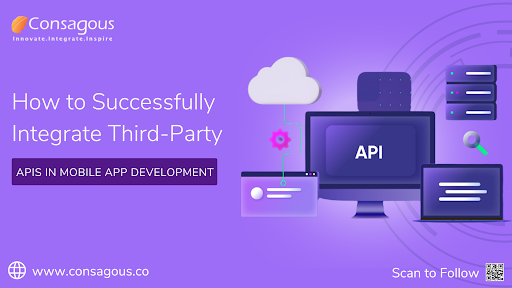
How to Successfully Integrate Third-Party APIs in Mobile App Development
Consagous Technologies Pvt Ltd
We believe in being your growth partner on your digital transformation journey!
Integrating third-party APIs (Application Programming Interfaces) has become an integral part of modern?mobile app development in the USA. APIs allow developers to access pre-built functionalities, speeding up development time, improving efficiency, and enabling seamless integration with external services. However, proper integration is key to ensuring that the app operates smoothly and provides the best user experience. In this blog, we’ll discuss the process of integrating third-party APIs in mobile app development, covering the tools, technical aspects, and potential pitfalls to avoid.
The Importance of Third-Party APIs in App Development
APIs allow mobile app developers in the USA to extend the functionality of their apps by leveraging existing platforms and services, such as social media logins, payment gateways, and geolocation services. APIs also facilitate the creation of apps that are connected to broader ecosystems, making them versatile and user-friendly.
Recent statistics show that 83% of all?web traffic?was API-driven in 2022, highlighting the growing importance of APIs in both web and mobile app development. Moreover, 62% of developers in the USA use third-party APIs regularly to enhance app features and functionalities, which demonstrates their widespread adoption in modern software development.
Key Steps to Successfully Integrate Third-Party APIs
1. Choose the Right API for Your Project
The first step in integrating third-party APIs into your app is selecting the right API for your project. Consider aspects such as the API's reliability, documentation, and developer support. The API should align with your app’s objectives and enhance user experience.
Tools like Postman and Swagger can be extremely helpful when testing API endpoints and understanding their functionality. These tools allow you to simulate requests and responses, helping to ensure the API works as intended before full integration.
2. Understand API Documentation
Before integrating any third-party API, it is crucial to thoroughly understand its documentation. API documentation contains all the necessary details about endpoints, methods, and error handling. Many?app development companies in the USA?overlook this step, leading to implementation errors.
Ensure that the API provider has clear and detailed documentation. Stripe, for instance, provides excellent API documentation for payment processing, making it a preferred choice among developers.
3. Authentication and Authorization
Security is a major concern when integrating third-party APIs. Most APIs require authentication, and it’s essential to implement secure methods such as OAuth 2.0 or JWT (JSON Web Tokens) to ensure that sensitive data remains protected.
OAuth 2.0 is an industry-standard protocol used by many?mobile app development companies in the USA?to allow secure access to third-party services without exposing credentials. For example, if you're integrating social media logins (e.g., Google, Facebook), OAuth 2.0 ensures user security.
4. Error Handling and Monitoring
API integration can sometimes result in errors, such as broken connections, downtime, or rate limits. To mitigate these issues, error handling and monitoring must be prioritised.
领英推荐
Tools like Sentry and Datadog are commonly used by top US app development companies to monitor API performance and errors in real-time. Implementing robust error-handling mechanisms will help ensure that your app continues to function even if the API experiences downtime or latency issues.
5. Optimize API Calls
Optimizing API calls is vital to ensuring your app’s performance and efficiency. Poorly optimized API integrations can lead to slow app performance and high data consumption. Techniques like caching and pagination can improve API call performance, reducing the app’s load times and improving user experience.
Many mobile app development agencies use tools like Redis for caching and GraphQL to optimize API data fetching. This results in fewer network requests and faster response times, enhancing overall app performance.
Common Challenges in API Integration
Even though APIs make mobile app development easier, there are common challenges that developers face:
Best Practices for API Integration in Mobile Apps
Conclusion: APIs as Catalysts for Innovation
Third-party APIs are crucial for modern mobile app development, enabling developers to quickly implement complex functionalities and create more dynamic user experiences. By following best practices such as optimizing API calls, monitoring performance, and ensuring secure authentication,?app development companies in the USA?can build powerful, API-integrated apps that meet the needs of today’s tech-savvy users.
With tools like Postman, Swagger, Redis, and Datadog, developers can streamline the API integration process, making sure their apps are both efficient and reliable.
For businesses looking to integrate third-party?APIs?into their apps, partnering with a top-tier mobile app development company in the United States is essential. At?Consagous Technologies,?we specialize in API integration, ensuring that your app remains robust, secure, and scalable.
Contact us?today at?[email protected],?+91 75660 91454, or?+1 (213) 257-8054?to learn how we can help you achieve seamless third-party API integration.
Original Source:?https://bit.ly/48j0MzT